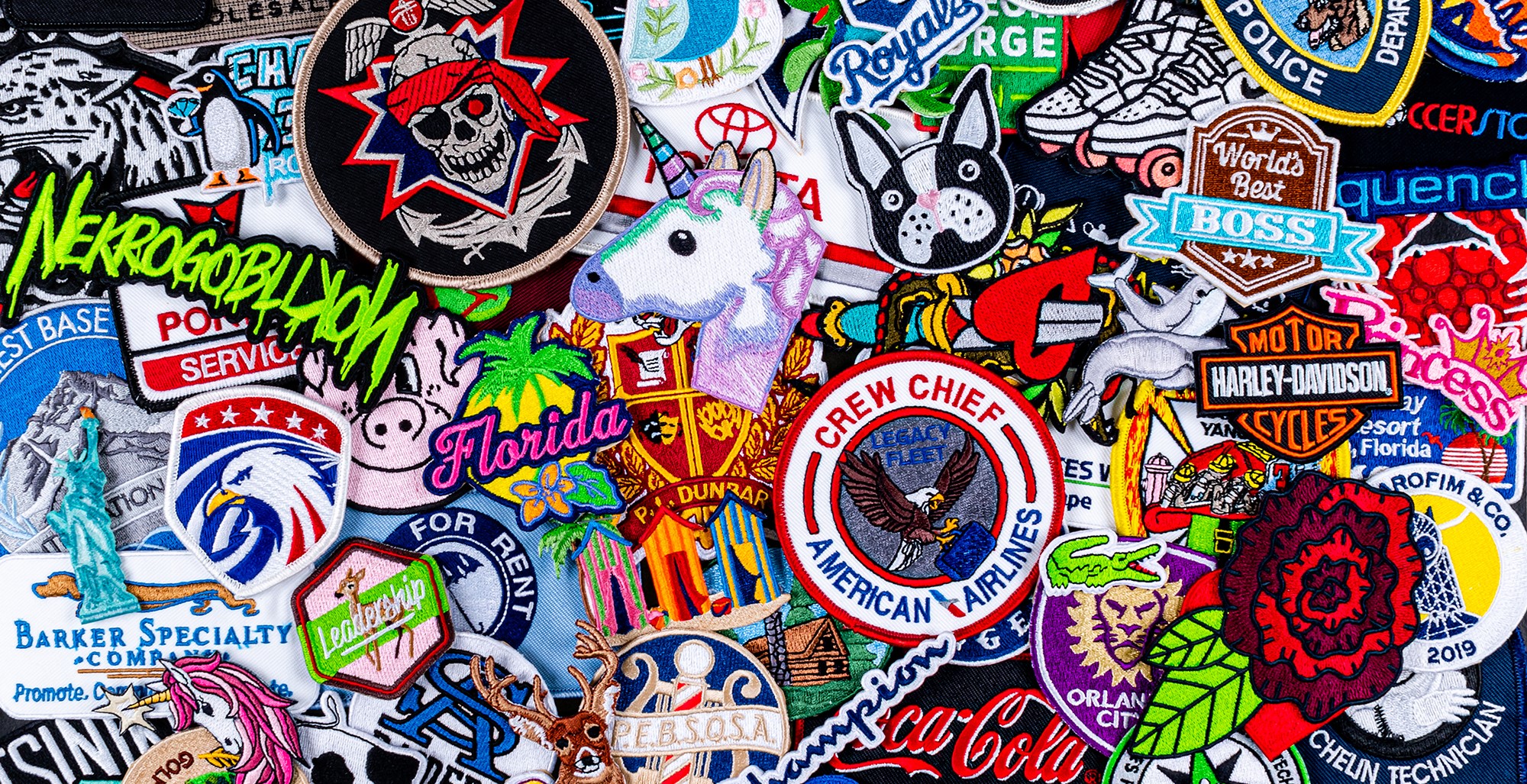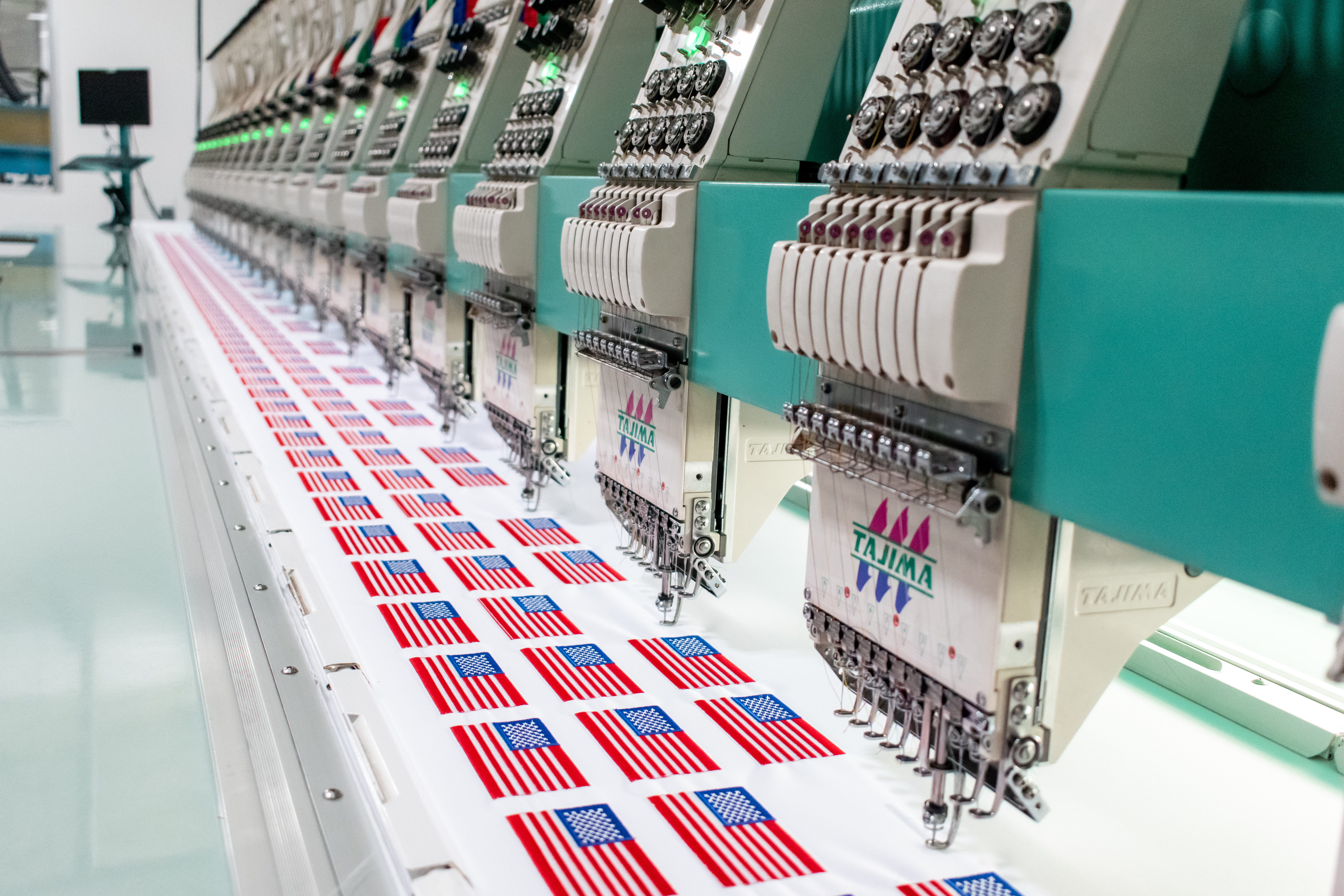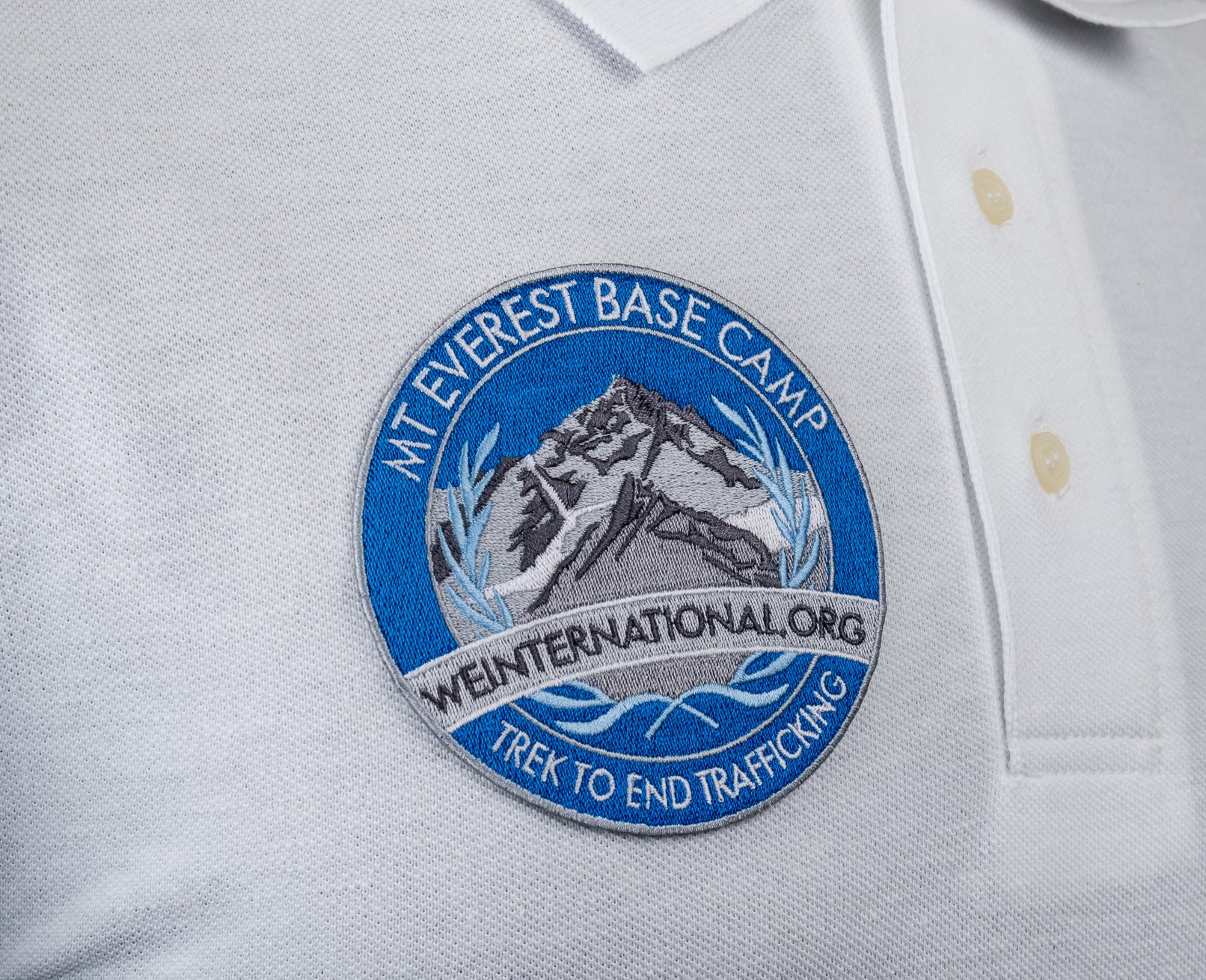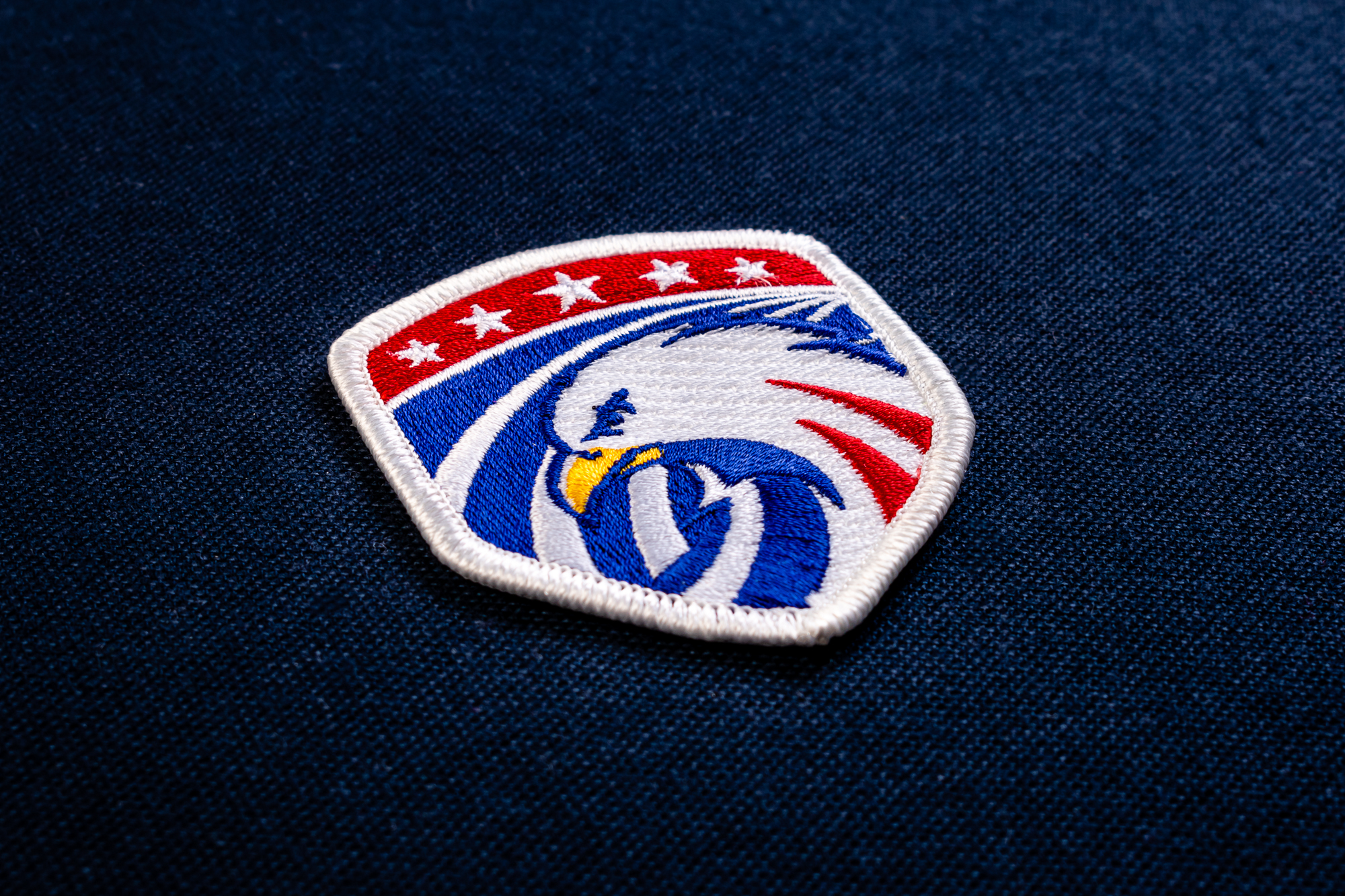
By Randy Carr
Published by Impressions Magazine
There are many advantages to offering an embroidered emblem over direct embroidery. In the case of a uniform you want to reuse, it is easy to remove an old patch and replace it with a new one. When doing business at an onsite event, a customer may not want to wait for direct embroidery on a cap, but may be thrilled to simply buy a commemorative patch they can sew on at home.
If you are crunched for time, ordering embroidered patches instead of directly embroidering on merchandise can make the difference between meeting a deadline and missing it. It is more cost effective than direct embroidery and is a great solution for the budget-conscious customer.
When dealing with promotional products, often adding a patch is easier and less expensive then direct embroidery. Examples include a golf club bag, luggage, backpacks and even drinkware. Special tumblers are available with space between the outer wall and insulation that allow a patch to be slid in between.
Patches can be the perfect solution if you don’t offer embroidery in-house, or you are not set up to create them and want to test your market. Regardless of your reasons, choosing a reliable, high-quality supplier is paramount to ensuring customer satisfaction and your own profitability

If you need a large quantity, like 10,000 or more patches, look for a supplier who has the experience and equipment
The two most frequently asked questions are how much and how fast? Both of these can usually be found by visiting a supplier’s website. A reputable supplier will have this information readily available.
Be aware of the tradeoffs when you focus on price as the most important criterion for choosing a supplier. Of course, the lowest prices are going to come from offshore vendors and/or U.S. brokers who use offshore companies. So you immediately have to make sure they can meet your deadline and, if you do not have a history with them, trust them to make it on time. This may be especially critical when shortages are affecting all companies globally.
Another downside will be fewer options and less flexibility. If you want anything out of the norm, you may find they are not equipped to handle it. And if you need fill-ins or anything rushed, that is not likely to happen. (Any other examples of fewer options and less flexibility?)
But price and turnaround are not the only two factors you should consider when choosing a company. One of the first things I recommend is to investigate if the company specializes in emblem manufacturing or is an embroidery house that does it on an occasional basis, whose core strength is direct embroidery.
Logically, you are going to receive higher quality and quicker service from a company that produces patches day in and day out as its main service. It also will be better equipped to handle special requests, rush orders, greater customization and larger quantities.
Speaking of quantities, typically an embroidered patch minimum will start at 25 pieces. In addition to the per-patch cost, also expect to pay for art setup and a preproduction sample. Be prepared to pay an additional charge for a design with more than six colors, metallic thread or a non-stocked custom thread color. It is also customary for your supplier to email you with a digital preproduction sample for approval.

When evaluating patch quality, look to see how well the supplier handle details like lettering or artwork elements, as well as if any layering was used
You may want to request a sample patch to evaluate; however, I recommend looking to see if they have done designs in the past that are similar to what your artwork looks like. If you decide to request a sample based off your art, the first step is seeing how well the original art was replicated. Also take note of how they handled small details in the design and if any layering was used. For example, are there too many or too few stitches to get the desired effect?
Also look to see how the emblem was trimmed and finished. Stitching should be even and consistent, with no loose threads, skipped stitches or looping. All design elements should be in registration with nothing crooked or off center.
Inspecting at the end of a run should be done by an expert who knows what to look for and to ensure the emblem is properly finished. You should expect the same quality in an order of 25 pieces that you get in an order of 20,000. A good emblem house will hold to a consistent standard. Many places will do overruns in the event that some pieces do not meet the criteria.
What are you applying your emblem to? A full-service supplier will offer the options of a low-melt heat-seal adhesive for temperature-sensitive products, an industrial heat-seal adhesive that would be ideal for sports uniforms or anything that will be subjected to friction and abrasion, a Velcro backing so it can be taken on and off, and a pressure-sensitive backing for applying to hard goods.
If you are looking to create an emblem that stands out, check out what options are available when choosing a supplier. One example of a specialty patch is a three-dimensional embroidered emblem. This style uses puffy foam to elevate a portion of the design or the entire emblem giving it added texture and interest.
A mixed media emblem is another example that combines sublimation with embroidery. The background is printed in full-color sublimation, and embroidery is used to enhance elements of the design to make them pop off the patch. In some cases, you may want your supplier to apply the patch to a product. If so, make sure that service is offered.

Expect a good supplier to provide an immediatee price quote. In general, patch pricing is based on the number of stitches.
A good emblem manufacturer will offer a resolution to a problem with one call, and you should not have to wait longer than an hour if you leave a message. You should receive a response to an email within four hours and complete satisfaction within the terms of the arrangement. Otherwise the supplier should make it right. A price quote request should happen immediately.
A reliable supplier will offer in-house digitizing. If not, you should look for someone else. In the long run, it’s usually better and less expensive to allow the provider to do the digitizing.
In general, it will cost between $60 and $100 to have a patch digitized.
I recommend looking for a reliable, technically proficient supplier that offers a range of products. As your business grows, you want them to grow with you. Ideally, the provider keeps up with technology and new materials and always has the products and services most in demand. You want someone who is setting patch trends and can offer the most cutting-edge looks and techniques for your portfolio.
I hope this article gives you some ideas on how to narrow down your choices for an emblem manufacturer. At the end of the day, sometimes you have to try out a company to see what results and service you get. You should use a company you trust, who delivers on time and stands behind their product if there is a problem.